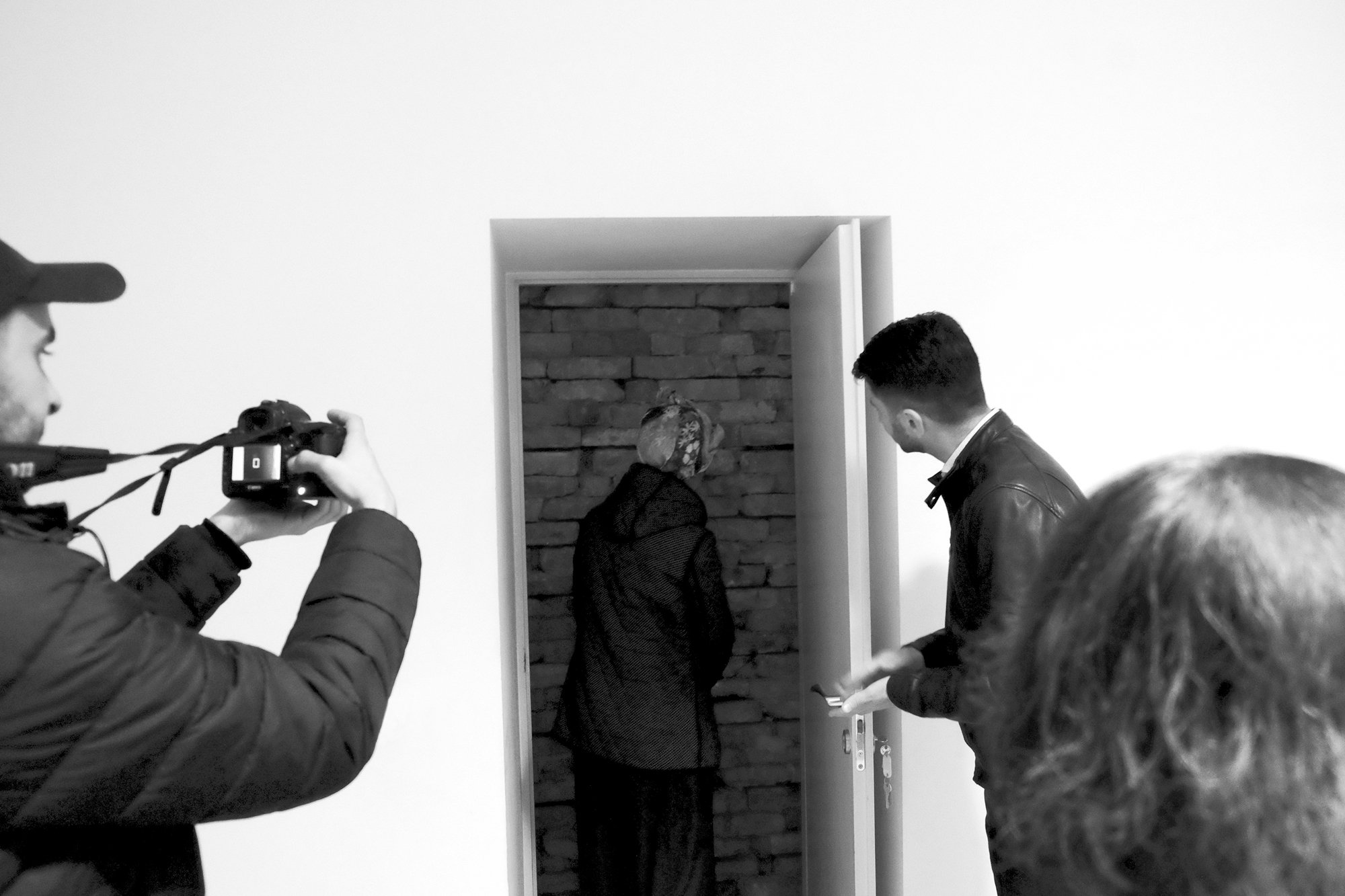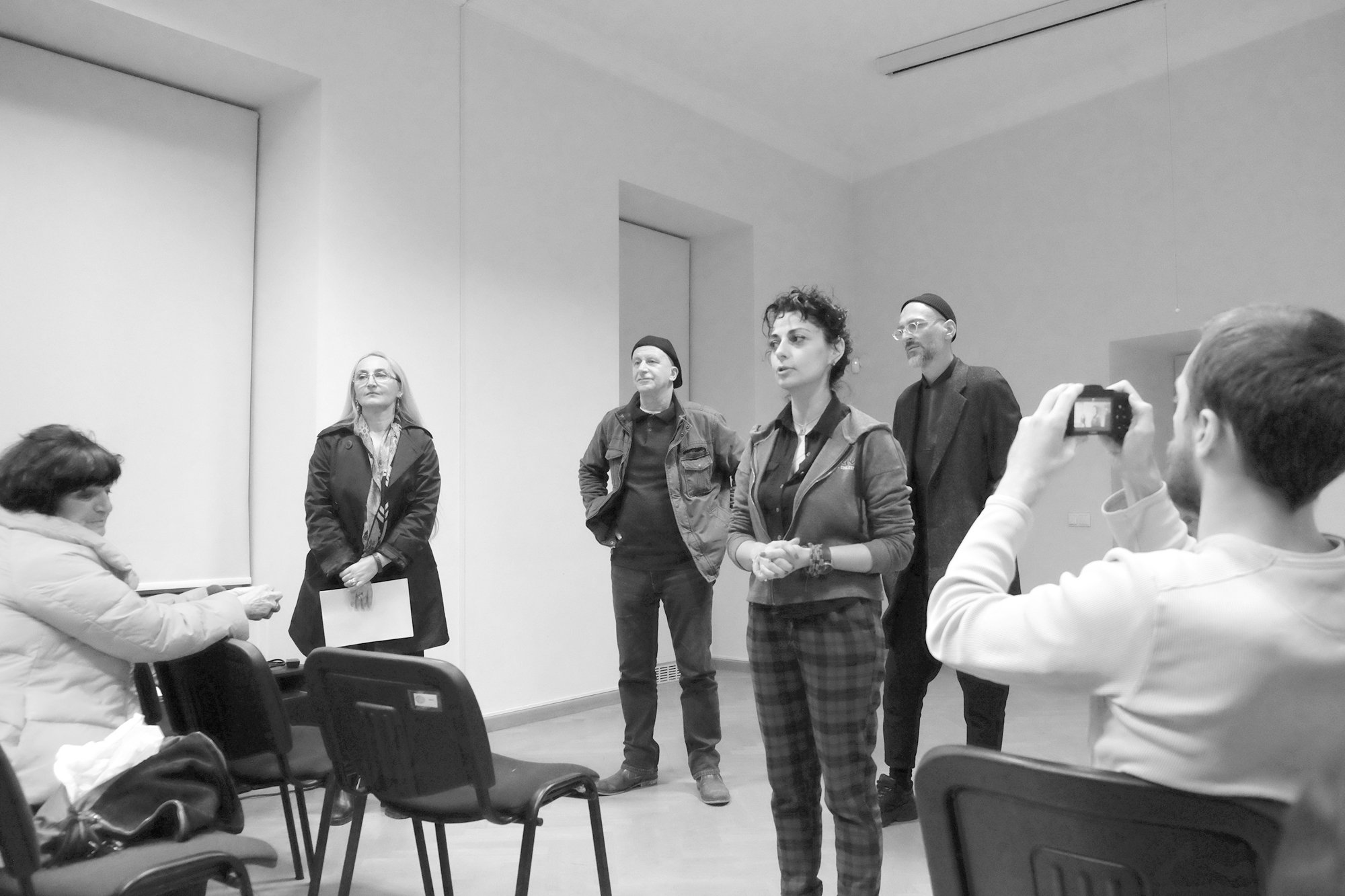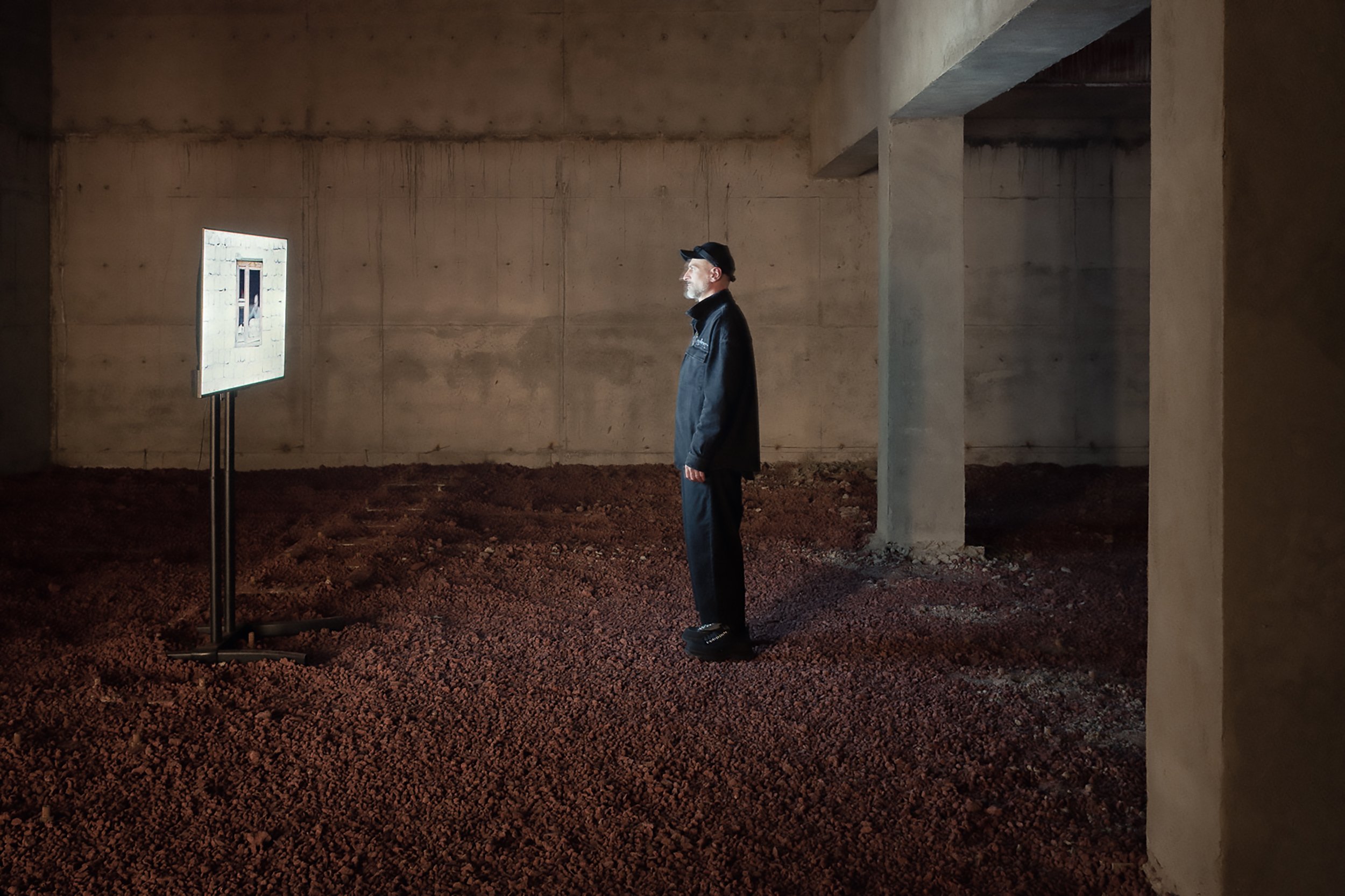Chilly Winter Is Expected
Film screening “Chilly Winter Is Expected” Swiss Embassy in Russia
“From Perestroika Until Today”
1985 Perestroika was not merely a political initiative — it was a crack in the monolith of an era. The world held its breath. People began to speak of the end of the “Evil Empire,” of collapsing systems, of walls that could fall, and curtains that could disappear.
It was a moment when history began to reassemble itself.
On the ruins of the old ideology, a new sensitivity was emerging. Voices of youth, rock anthems, street manifestos — all spoke of an anticipation of change. But change is not only liberation. It is the pain of growth, the fear of the unknown, the confrontation with chaos that had long hidden behind the mask of order.
The symbolic fall of the Berlin Wall was not an entrance into freedom, but a collision with a new reality: freedom is not given — it must be rebuilt, brick by brick — and each of those bricks may be heavier than it seems.
It was in this historical fissure between “yesterday” and “tomorrow” that Georgia began its path.
The phrase “Georgia will become the second Switzerland” was not just a political slogan. It became a dream, a mental support, a national illusion, and at the same time — an internal promise to oneself. This phrase was a light in the darkness into which the country plunged during the 1990s.
Hunger, cold, devastation, war — all of it formed the context in which the dream had to survive.
And still, Georgia chose not to return to empire, but to move forward — through chaos and blood, toward independence and the attempt to build a new world order. A path where the fall of the wall did not mean an automatic entry into Europe, but rather a difficult and often contradictory dialogue with oneself and with the world.
This project is not a chronology. It is an attempt to look at post-Soviet trauma as an internal condition — to view the idea of freedom not as an accomplished fact, but as an unstable and complex process.
It is a reflection on how a country with fragmented memory, with inherited fear and hope on its shoulders, step by step enters the global discourse — not only as a participant, but as a subject with a voice.
“From Perestroika Until Today” is not a path of victories, but a path of endurance. It is not a straight line of progress, but a pulse between hope and disappointment, between a wall and a window, between a past that will not leave and a future that has not yet arrived.
And perhaps it is precisely in this interval — between the fall of the wall and the impossibility of fully walking away from it — that the present is born.
This project is about how Georgia has changed since Perestroika. How it stepped onto the international stage, moved closer to European standards, and became an active participant in the global dialogue.
It speaks to the recognition and understanding of global challenges — from ecology to humanitarian crises, from human rights to the development of education and culture. It is a reflection on a journey that began with hope — and continues to this very day.
“Art Panic”
Can art show tyranny, its nature and consequences? Can art show the panic that follows universal disillusionment and the impossibility of change? The main mood of perestroika was expectation, the expectation was about the destruction of the wall, the opening of borders, travel to other countries, the independence of one's country and the inevitable success. The rock movement celebrated its message with a hit of that period: Our bodies are waiting for changes, our hearts are waiting for changes, we are waiting for changes! The change began in words, sentences, their configuration.
Thoughts that slept under the rhythm of communist mantras appeared. At the time, it was said that the Soviet system was based on magic, it was atheistic, but it aimed to create heaven on earth. "Communists have no other goal than to achieve the happiness of all people living on earth. (Nikita Khrushchev. Program of the Communist Party. 1961.) Of the Perestroika publicist programs, the "Fifth Wheel" (Пятое колесо) was particularly popular - a project of Leningrad Television, which first It was aired on April 11, 1988. This program suddenly gained popularity and a large part of the perestroika society became its audience And in imitation of logical reasoning, a new myth was presented, according to which Lenin took hallucinogenic mushrooms and eventually turned into mushrooms. During the discussion, Kuriokhin spoke about the Mexican expedition, from where he had just arrived, and the texts of Carlos Castaneda were confusing to the audience He listened to the scientific hypothesis in full compliance with the rules of argumentation.
Kuryokhin said that Lenin was a mushroom and a radio wave at that, reasoning that the cut of the armor on which Lenin's famous speech took place matched the structure of the mycelium of the mushroom Amanita, and the word "ninelli" - read backwards "Lenin" - was the French name for a dish made from mushrooms. Excerpt from Sergey Kuryokhin's discussion: - ,, as for radio waves, - a person becomes a mushroom and a radio wave at the same time. do you understand Now I will tell you the main thing, where the case is leading me. I have absolutely convincing proof that the whole October Revolution was brought about by people who had been taking certain types of mushrooms for years. And these mushrooms, in the process of these people using them, completely expelled their personalities, turning people into mushrooms. That is, to put it simply, Lenin was a mushroom. And there was a radio wave mushroom with it, you know? "A few months after this tele-action, the Soviet Union was officially dissolved.
During the period of perestroika, a lot of people thought and talked about the model of tyranny by which the system that was already in a stable mode was managed. In 2017, at the Dutch festival in Amsterdam, the Stanislavsky Electro Theater performance was presented - Dmitri Kurliandsky's opera Octavia. Trepanation" directed by Boris Yukhananov. The libretto was based on Lev Trotsky's writings about Lenin (1924) and the play about the Roman emperor Nero, attributed to Seneca. On the stage is a huge head of Lenin surrounded by the skeletons of centaurs, this giant head with a laurel wreath like the Roman emperors moves on both sides of the Chinese terracotta army soldier Abby too With the presence of goliath and headless figures, - the image of tyranny, cruel and bloody. Where there is power, there is resistance, one is building a wall and the other is planning to destroy it. The governed society had to implement, probably in the same way, - replacing the communist mantra with the perestroika mantra. The Soviet man is happy, - repeated the Soviet mantra, - the perestroika man expects changes, opens the doors, opens the border, destroys the wall, or builds a new wall.
Khatuna Khabuliani, PHD Art Historian
“Chilly Winter Is Expected”
The installation “Chilly Winter Is Expected” is a profound existential and political metaphor that explores the inevitability of isolation and self-imposed limitation—both on an intimate, personal level and on the scale of global civilization. At the center of the work is a slow, deliberate gesture: the gradual bricking-up of a window. This window, traditionally a symbol of openness, light, breath, and communication with the outside world, becomes the focal point of an oppressive transformation. Its disappearance behind a rising wall of bricks reflects not only the closing off of physical space but the slow suffocation of inner freedom, imagination, and possibility.
This is not an act of violence inflicted from without—it is a conscious act of withdrawal. And in this, the installation reveals its core existential paradox: instead of facing uncertainty, seeking transformation, or embracing vulnerability, the individual—or society as a whole—retreats, fortifies, and freezes. It is a metaphor for psychological self-protection that mutates into a prison. In trying to avoid external threats, we turn inward, cutting off the very paths through which growth, contact, and change might arrive. What begins as preparation becomes paralysis.
The chilling metaphor of a “winter” is not seasonal. It is a state of being. A suspended time in which everything slows down and congeals. “Chilly Winter Is Expected” speaks to the fear of the future—of the unknown, of others, of instability—that drives both individuals and nations to close their borders, erect walls, and seal their vulnerabilities rather than confront them. It becomes not just a symbol of inner stasis but a mirror of global tendencies.
At a deeper level, the installation carries a prophetic warning. The gradual concealment of the window foreshadows a world sliding into isolationism. Open spaces—once symbols of cooperation, dialogue, migration, and mutual understanding—risk becoming relics of the past. The window becomes history. As countries increasingly turn inward, reinforcing not only territorial but ideological and emotional boundaries, a new form of stagnation emerges: one that masquerades as safety but breeds fear, mistrust, and decay.
“Chilly Winter Is Expected” is not simply about the loss of light—it is about the loss of direction. It invites viewers to question whether we are witnessing a protective gesture or the architecture of our own entombment. Are we shielding ourselves from the cold, or building the conditions for an even deeper freeze? The installation captures the existential tension between survival and transformation—between preparing for crisis and becoming the crisis.
Ultimately, it serves as a stark reminder: the walls we build to keep danger out may, in time, keep us trapped inside. And if we are not careful, we may awaken one day to a world where every window has become a wall—and the winter, once expected, never ends.
“From Perestroika Until Today”
The installation “From Perestroika Until Today” serves as a metaphor for a frozen reality where both society and the state are stuck on the path to progress. The existential depth of this work lies in the feeling of helplessness and the inability to overcome one’s own limitations, both personal and societal.
The door itself, as a symbol of possibility, is connected to the idea that every person strives for progress and a better future. An open door is usually associated with an exit from difficulties, but here it becomes an illusion—behind it is a brick wall, reminding us that the promises and hopes for development after the collapse of the Soviet Union have remained unfulfilled.
The brick wall is not just a physical barrier; it symbolizes invisible boundaries within us: social, political, and existential limitations that prevent us from moving forward. A person who confronts this obstacle finds themselves in a state of constant waiting, where the desire for exit and progress is blocked by an impenetrable wall, condemning them to repeat the same questions about the meaning of existence.
The existential fear in this installation lies in the realization that progress is not only a material process but a spiritual one as well, and its absence is a frozen moment in time, an eternal “today” in which we are stuck.
The works from the project "From Perestroika Until Today" were exhibited:
2019 Group exhibition "From Perestroika Until Today" National Research Centre for Georgian Art History and Heritage Preservation
2023 Personal exhibition "Lost Signal Tracking" RUARTS GALLERY
2023 Film screening “Chilly Winter Is Expected” Swiss Embassy in Russia
2024 Culture Week Tbilisi "Lost Signal Tracking" Factory Tbilisi
2024 Group exhibition "New Faith" Arcane Space museum of modern art. Tbilisi, Georgia











































